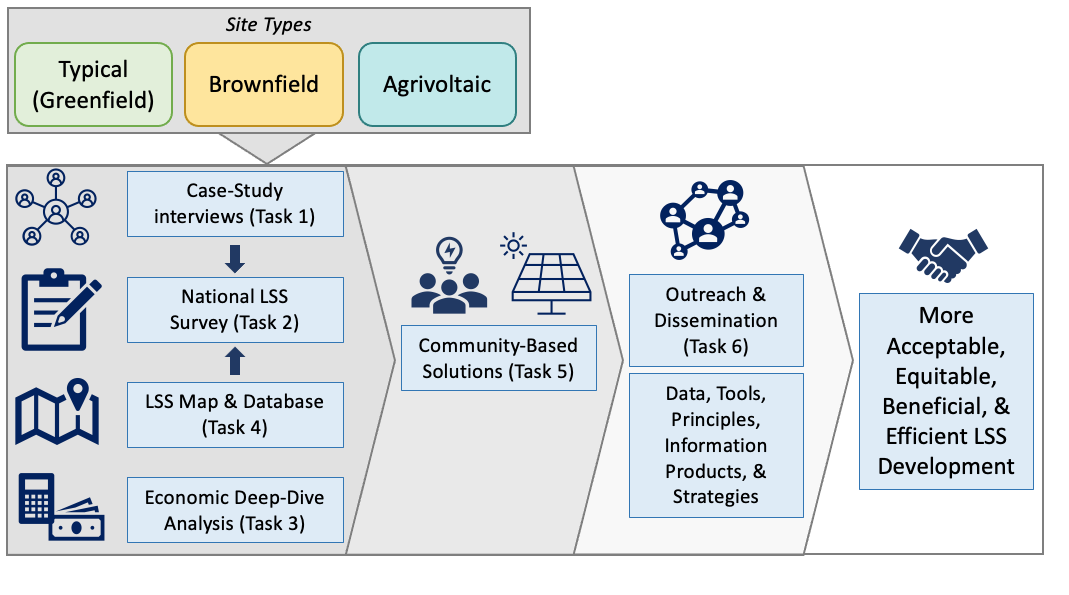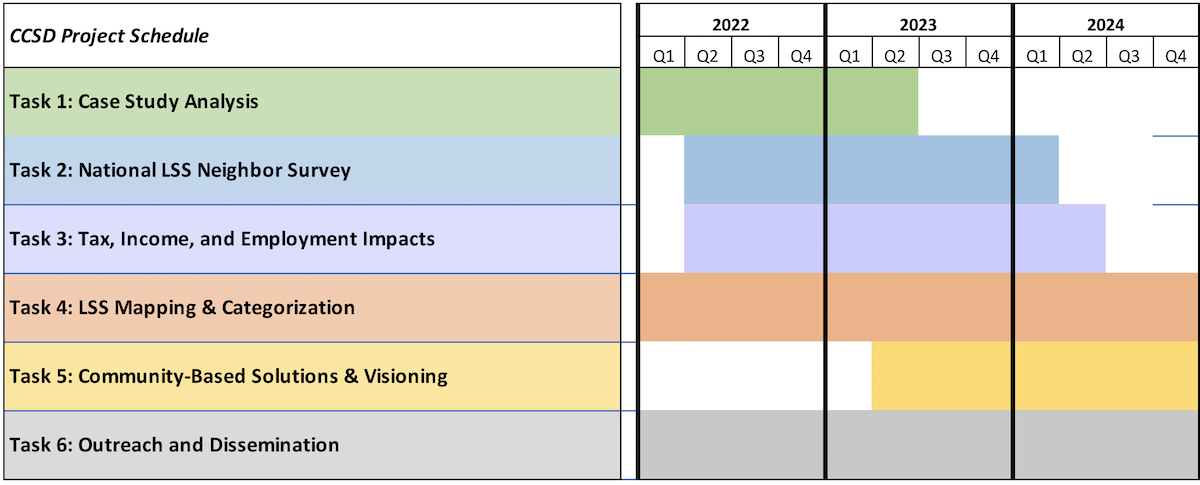Project Timeline

The project team members and activities are spread across six interlinked and ordered tasks that serve to organize and focus our efforts.
Task 1: Case Study Analysis: Analyze six existing solar projects (brownfield, agrivoltaic, and greenfield, including those in underserved communities) involving interviews to uncover the key factors that led to project success or threatened failure.
Task 2: National Large-Scale Solar (LSS) Neighbor Survey: Conduct a national random survey of at least 1,000 LSS project neighbors, oversampling among site types, to reexamine case-study findings at a broader empirical scale enabling national generalization.
Task 3: Tax, Income, and Employment Impacts: Conduct one nation-wide analysis of LSS impacts on local tax, local individual- and firm-level income or employment, characterize a baseline average economic impact, and also conduct a deep topical dive to allow greater applicability at a more local level.
Task 4: LSS Mapping & Categorization: A geographic categorization will be completed of all existing U.S. LSS sites, as well as analyses of land-use and capacity trends to better understand future LSS development potential.
Task 5: Community-Based Solutions & Visioning: Engage in planning with six potential LSS host communities to utilize information from the previous tasks to develop community-centered and audience-specific plans for prospective LSS developments. Produce a guidebook and checklist for a broader audience.
Task 6: Outreach and Dissemination: Establish a technical advisory committee, arrange internships with students from Task 5 communities, and conduct extensive outreach and dissemination on all project deliverables.
The project team will disseminate through the team, partner, and technical advisory committee member networks, as well as to the mailing list registrants, a suite of outputs from the above tasks such as:
- Five journal articles from:
- Task 1, covering perceptions and attitudes of CCSD from the case study locations
- Task 2, on the results from the national survey focused on identifying the key drivers, attributes, and practices that would result in more community-centric solar development.
- Task 3, focused on a national study of LSS impacts on local economies
- Task 4, focused on land use patterns of LSS over time and across the three site types
- Task 5, on the results of the visioning exercises and broader CCSD recommendations.
- Five recorded webinars covering the above topics with downloadable Powerpoints and summary documents;
- A national geospatial dataset from Task 4 of polygons outlining all groundmounted LSS;
- A summary report featuring lessons learned and best practices from the 6 case studies in Task 1;
- Three audience-targeted short informational briefs focused on Task 5 best practices, tailored toward different stakeholder groups, such as LSS developers, community decision-makers, and community members; and,
- A visioning guidebook and checklist of best practices incorporating energy and procedural justice themes, to allow communities to assess and improve their own plans for community-centered solar development.
